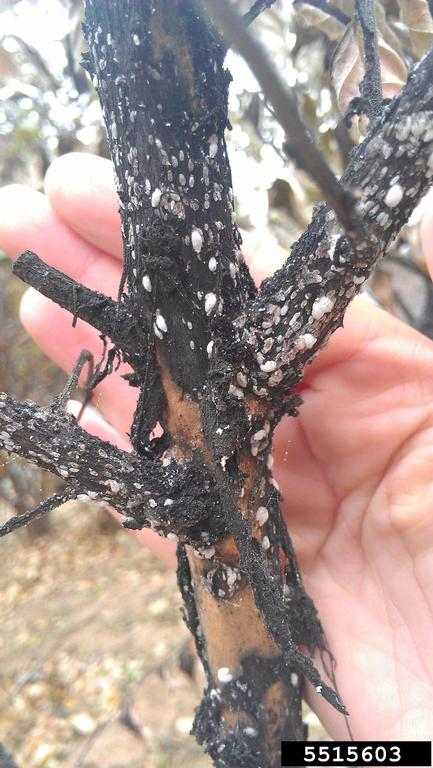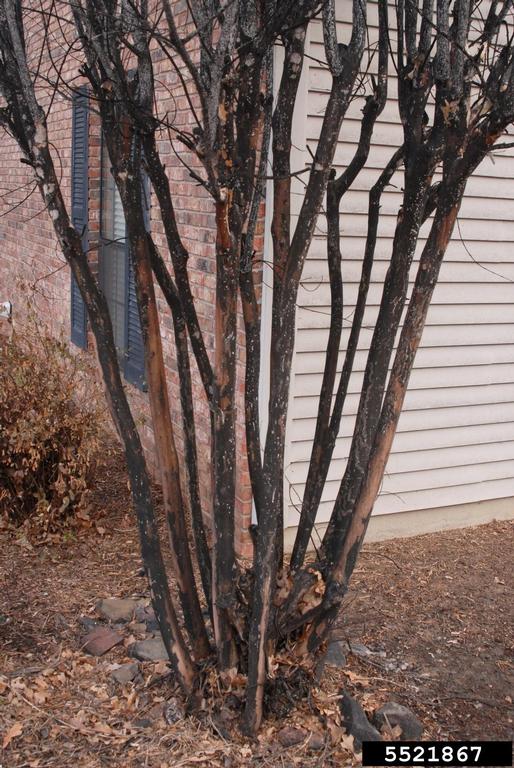Crape Myrtle Bark Scale
Most gardeners are first alerted to crape myrtle bark scale by the presence of black sooty mold on the bark of their crape myrtles.

About Crape Myrtle Bark Scale
Crape myrtle bark scale (CMBS) is relatively easy to identify. It is one of the only scales known to infest crape myrtles. Adult females are felt-like white or gray encrustations that stick to crape myrtle parts ranging from small twigs to large trunks. When crushed, these scales exude pink “blood”-like liquid.
On new growth and in heavy infestations, the scales may be distributed more uniformly on the branch. Up close, CMBS is white to gray and about 2 mm (0.08 inch, a bit longer than the thickness of a dime) long. Look closely, and you may see dozens of pink eggs or crawlers. Most gardeners are first alerted to CMBS by the presence of black sooty mold on the bark.
Hosts
Crape myrtle

Damage Caused by Crape Myrtle Bark Scale
Most gardeners are first alerted to CMBS by the presence of black sooty mold on the bark. The presence of the white adult scales on the bark and twigs, and the pink blood exuded when crushed, distinguishes this scale. Crape myrtle bark scales may aggregate toward the undersides of young horizontal branches instead of the parts exposed to the sun. Although heavy scale infestations are seldom fatal, the aesthetic impacts are significant.
How to Control Crape Myrtle Bark Scale
Based on limited experience with this pest so far, CMBS appears to be difficult to control. Soil-applied neonicotinoids can suppress it significantly. Our current best suggestions for controlling this insect include:
- Before buying crape myrtles, inspect the nursery crop carefully for signs of CMBS infestations. Avoid crape myrtles with significant mechanical damage.
- Wash the trunk and reachable limbs with a soft brush and mild solution of dishwashing soap and water. This will remove many of the female scales and egg masses, making insecticide control more effective.
- Systemic insecticides have shown the most promise in tests to date. Apply them to the root zone as a soil injection or drench. The best control was achieved between May and July by applications of clothianidin, dinotefuran (Greenlight Tree and Shrub Insect Control with Safari), imidacloprid (Merit or Bayer Advanced Garden Tree and Shrub Insect Control), and thiomethoxam (Meridian).
If you would like more information about crape myrtle bark scale, please contact your local MFC forester.
